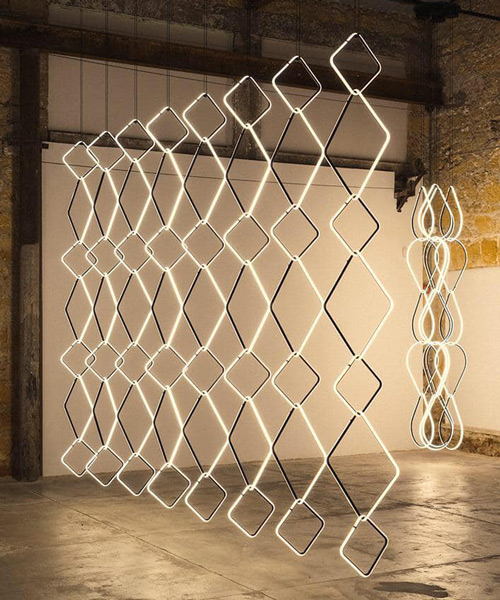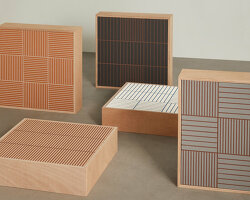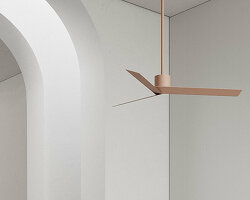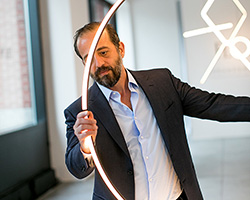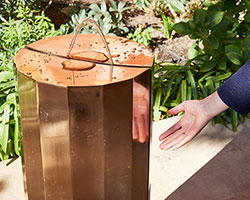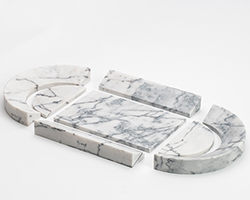‘there’s a moment when you put everything in one room, with all your insecurities, and then you realize — it makes sense. everything goes together and it works together…’
uniting lighting, object, and limited-edition furniture, the aptly titled exhibition ‘things that go together’ reflects on cypriot designer michael anastassiades’ 12-year practice to date — from his eponymous brand to his extensive studio collaborations with established manufacturers. presented by NiMAC (the nicosia municipal arts centre, associated with the pierides foundation) in cyprus, the show presents anastassiades’ creative process through his research, collection of objects and finished works from the studio archive — a personal and professional survey of the designer’s comprehensive career to date.
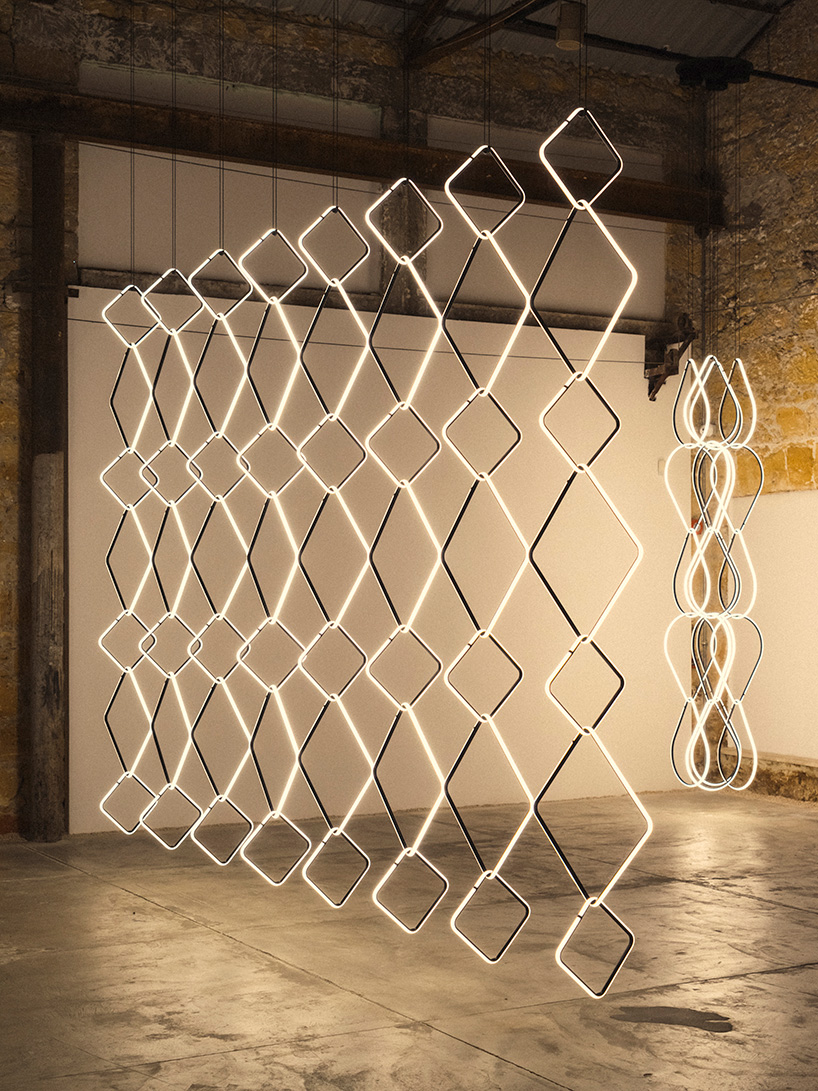
all images by osma harvilahti
michael anastassiades founded his studio in london in 1994, and has since collaborated with various manufacturers, and created signature limited-edition collections of furniture. for the exhibition at NiMAC, anastassiades had the monumental task of reviewing his work, curating a selection to show, and understanding how to organize them within the space. ‘we went through so many iterations trying to establish what this exhibition was going to be, going through so many different kind of classical ways and ideologies and approaches to the show itself,’ he tells us. in the end, anastassiades found that placing all of the elements on the venue’s marble floor and allowing visitors to make their own path through the site and work was what eventually made everything ‘fall into place’.
designboom spoke with anastassiades about the process of curating the show, the challenges of reviewing your own work, and what he’s learned about himself since working on the exhibition.
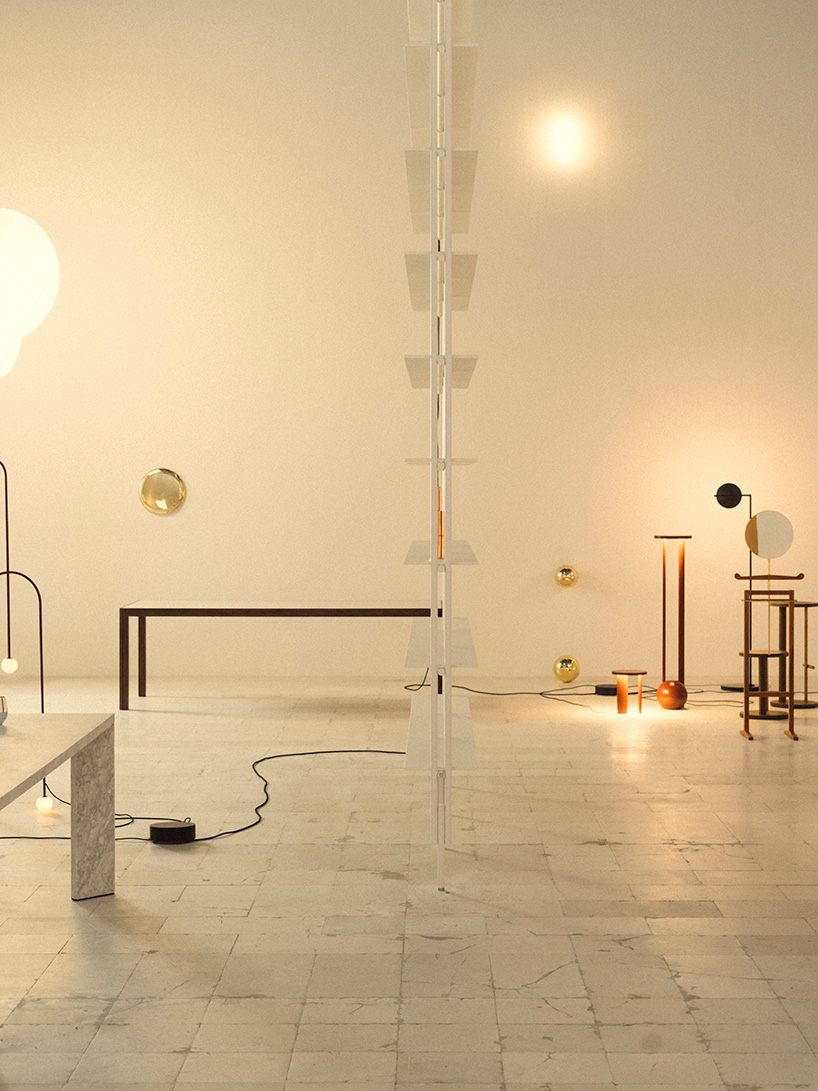
after considering multiple exhibition layouts, anastassiades decided to display all of the pieces on the floor
designboom (DB): what was the starting point for the exhibition?
michael anastassiades (MA): when NiMAC formally invited me to have an exhibition of this scale, I immediately thought that it had to start from cypress. it was important for me. I spent all of my early years in cypress. I grew up there — all of the memories, all of the inspirations, all of the dreams…leaving cypress and going abroad to study. it made complete sense that I did the exhibition there. it’s interesting because we, as designers, always think of what the next thing is. you start thinking about the next project before you even finish the one you’re currently working on. you always say that the next project is going to be better; it’s going to be different. you never really get the chance to stop that process.
when this opportunity came, it was quite a shock, because all of the sudden you say: ok, I’m not going to show anything new. this is all the work that I’ve done in the last 12 years, and I have to bring it all to this big space. it has to be curated by me, so it’s also a point of reflection. you say: how do I actually put everything in one space; how do I actually navigate the spectator, the viewer, through the space, through the work? do I do it on a chronological basis? you don’t even know where to start. we worked as a studio designing the show for the last 9 months approximately — it was a lengthy process. we went through so many iterations trying to establish what this exhibition was going to be, going through so many different kinds of classical ways and ideologies and approaches to the show itself.
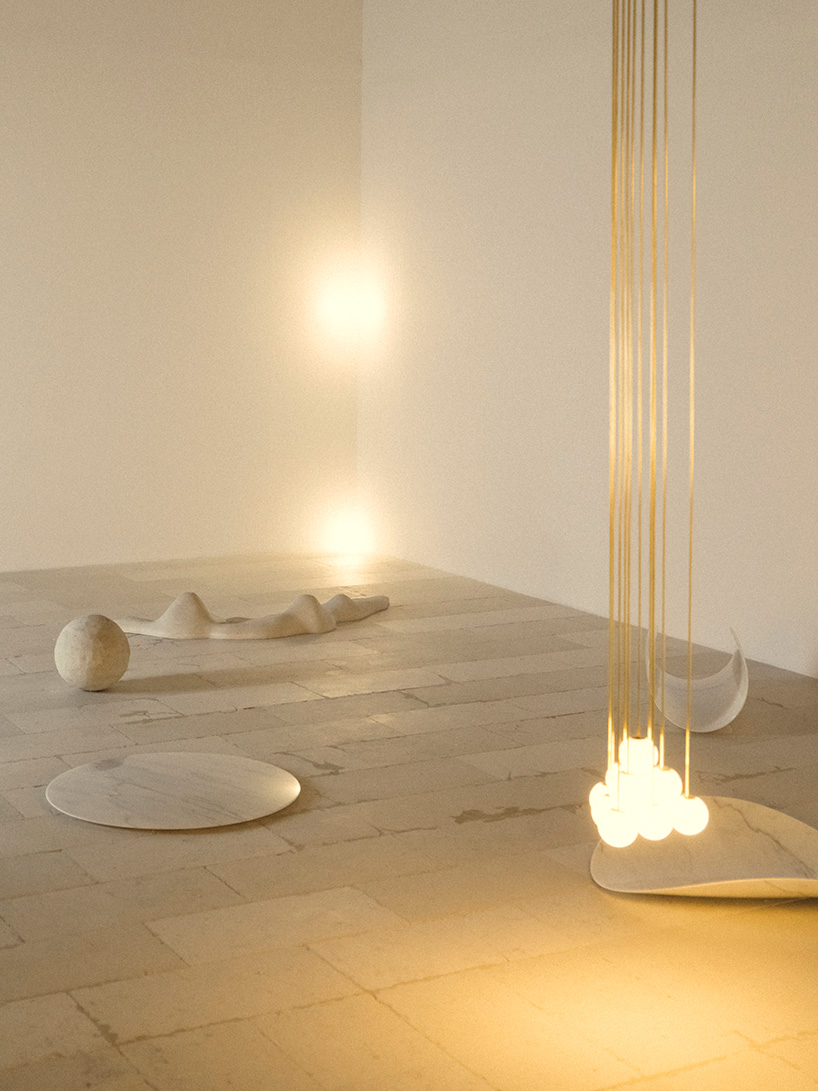
the show presents anastassiades’ creative process and finished works from the studio archive
DB: how did you arrive at the final organization of the exhibition, to display all of the pieces on the floor?
MA: right at the end, I decided to scrap all the ideas and said: in the main space where most of the work is to be exhibited, I am going to put everything on the floor. so, all of the objects are on this beautiful marble floor. from that moment on, everything fell into place. all these insecurities about how to prioritize, how to navigate, how to establish some sort of chronological link — it all fell into place. everything made sense. no hierarchy. everything on the same level. very democratic. it doesn’t matter how expensive an object is, how cheap it is, whether it’s limited edition, whether it’s mass production, whether small or large — everything was on the floor.
we brought power from above — the space has a really high ceiling, about 10 meters tall, and I had the wires coming from the ceiling and illuminating each lamp. it was very beautiful, because it was very honest in a way. also as a designer, I always feel that we are not designing objects to be in museums; we are designing objects to be used. therefore, this is the best way to communicate that. you need to allow people to imagine how it would be to live with this object. establishing that level of proximity — the fact that you can actually get so close to the object — makes complete sense. you can bend over, you can look at it, you can go around it, walk around it, see it, examine it and think, rather than having to view it on a platform, from a distance, with a barrier, or thinking ‘you’re not allowed to touch this.’ of course we would like the people not to touch the object (laughs), but you don’t have to put a barrier in front of them to forbid them from doing so. the other thing that was important was the level of informality, which allows for endless paths to navigate through the installation. so, every time you visit you choose a different path.
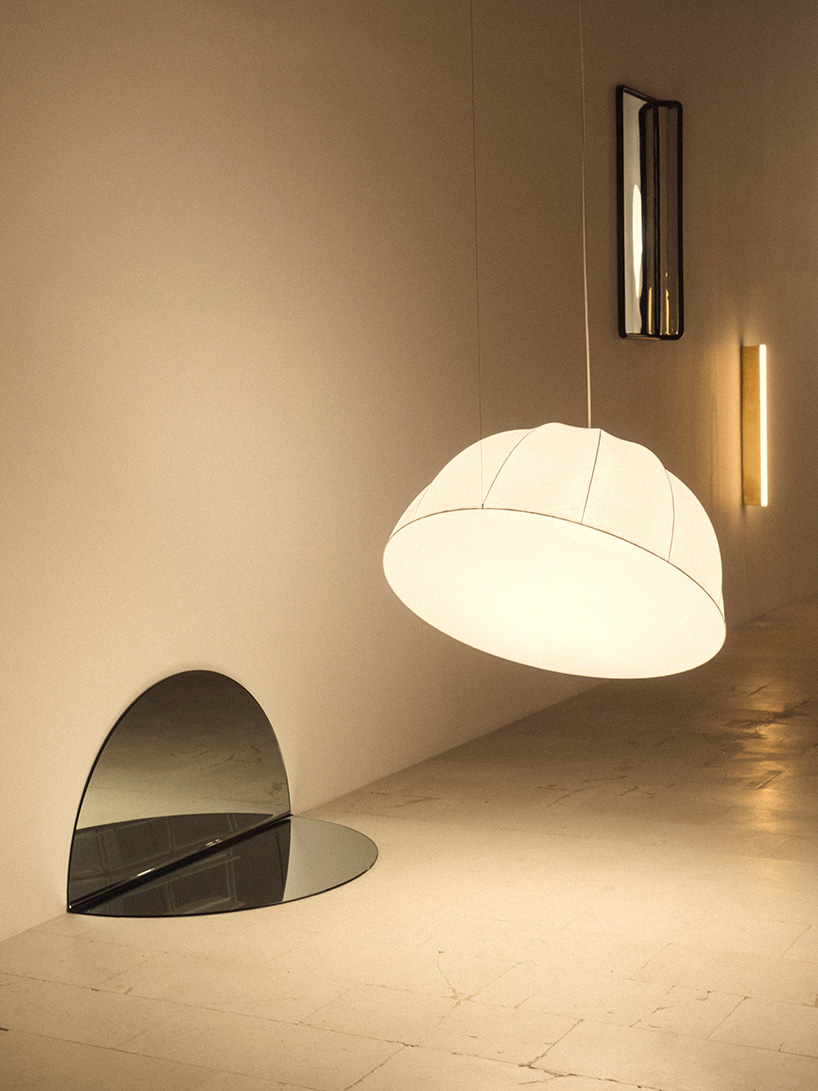
visitors to the exhibition are invited to make their own path through the site
DB: outside of the main exhibition space, what other areas can visitors discover, and what works can they find there?
MA: there is another room where I designed it to have one, complete collection of lights that I did, which is the ‘mobile chandelier’ series — the collection I’ve been designing since 2008 and have been adding new models to every 2 years. now we have about 13 models, and we’re showing them in that space. we installed motors, so you have a choreography of mobiles turning around in different directions. it’s like a dance; like a performance, which is really great.
in another space, I’m exhibiting my entire collection of stones that I’ve been collecting ever since I was a child. I’ve collected them from all around the world. a lot of these stones come from cypress, where I grew up. others from travel that I’ve done. any place that I go, when I find one interesting, I just pick it up. any kind of stone that I was curious about — its shape, its form, its color. that part of the exhibition really communicates the obsessive nature of the way I work.
we also have a very beautiful installation from the ‘string light’ project. it’s basically a stack of models, scaled rooms, identical kind of sized rooms in scaled models, so they’re like boxes stacked up. inside, I presented the ‘string light’ project with 72 different configurations. each one is completely different. I just wanted to communicate the obsessive nature of the project, the versatility of the project, and also the architectural references in the project — also the fact that as a studio, we always work with models. we never use computer software. I always work from sketch to model.
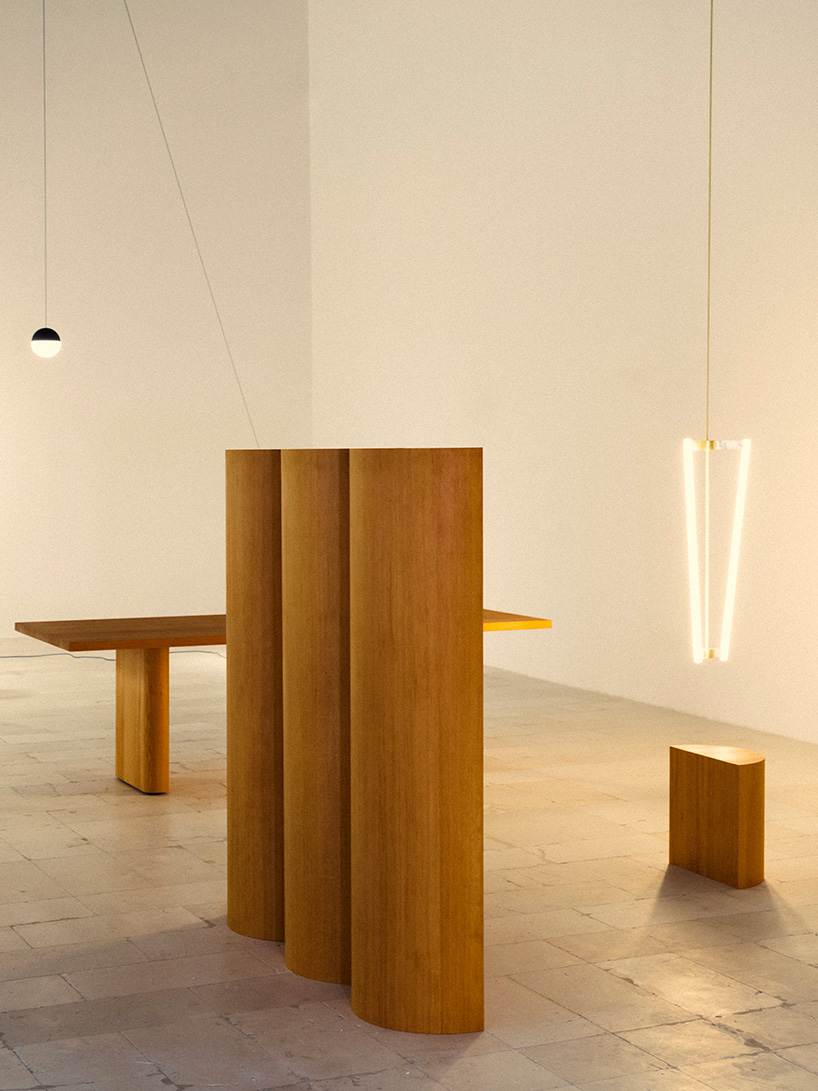
lighting and furniture come together to form a personal and professional survey of the designer’s career to date
DB: does the exhibition also include pieces you’ve designed outside of lighting?
MA: yes, everything! everything I have done in the last 12 years. it’s tables, it’s light, it’s objects, it’s limited edition products, it’s abstract objects, useful objects…that’s why the title of the exhibition is called that, ‘things that go together’ it’s the moment when you put everything in one room with all those insecurities, and then you realize, it makes sense. everything goes together and it works together.
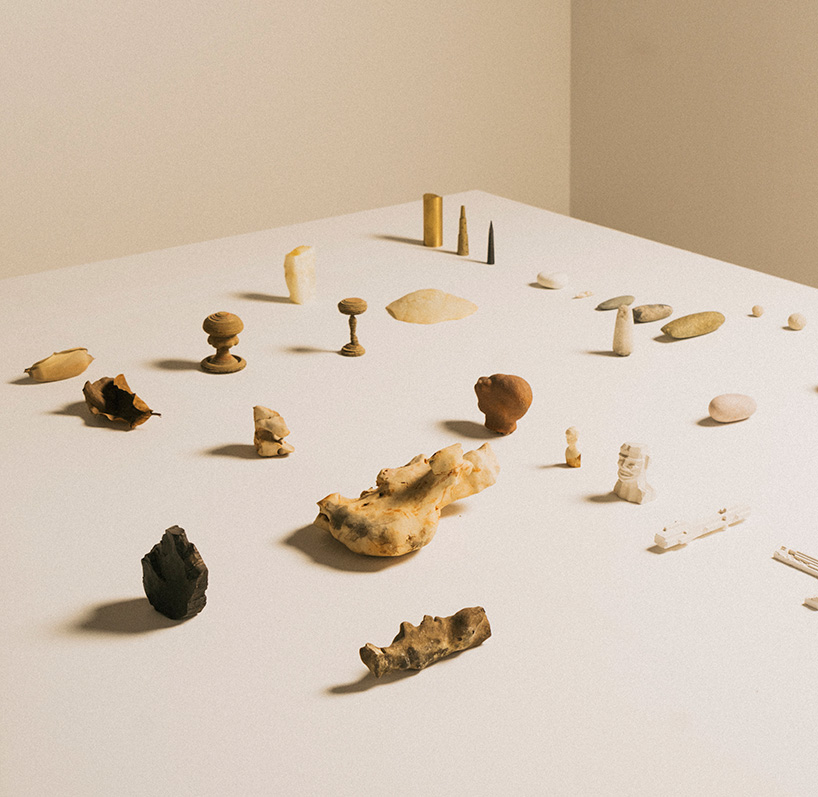
anastassiades’ personal collection of stones is also on view
DB: what do you think you’ve learned about yourself, about your work, in the process of curating and organizing this showcase of your work?
MA: I think what you learn is to become a little bit more confident — not as a designer establishing any level of arrogance — but maybe in the sense that, we as designers never have the time to stop. you always think that there is a certain level of chronology to your work that improves over the years, but this is not true, because all of a sudden I have pieces completely mixed up over 12 years, and you can’t really tell which came first. even simply thinking how much I’ve learned in the past 12 years. in the beginning, when I first touched my first piece of furniture, I knew so little about furniture. I knew so little about wood. then, the pieces that I did last year is not that different in terms of aesthetic or solutions that I found. so, it’s interesting that discoveries like that come apparent.
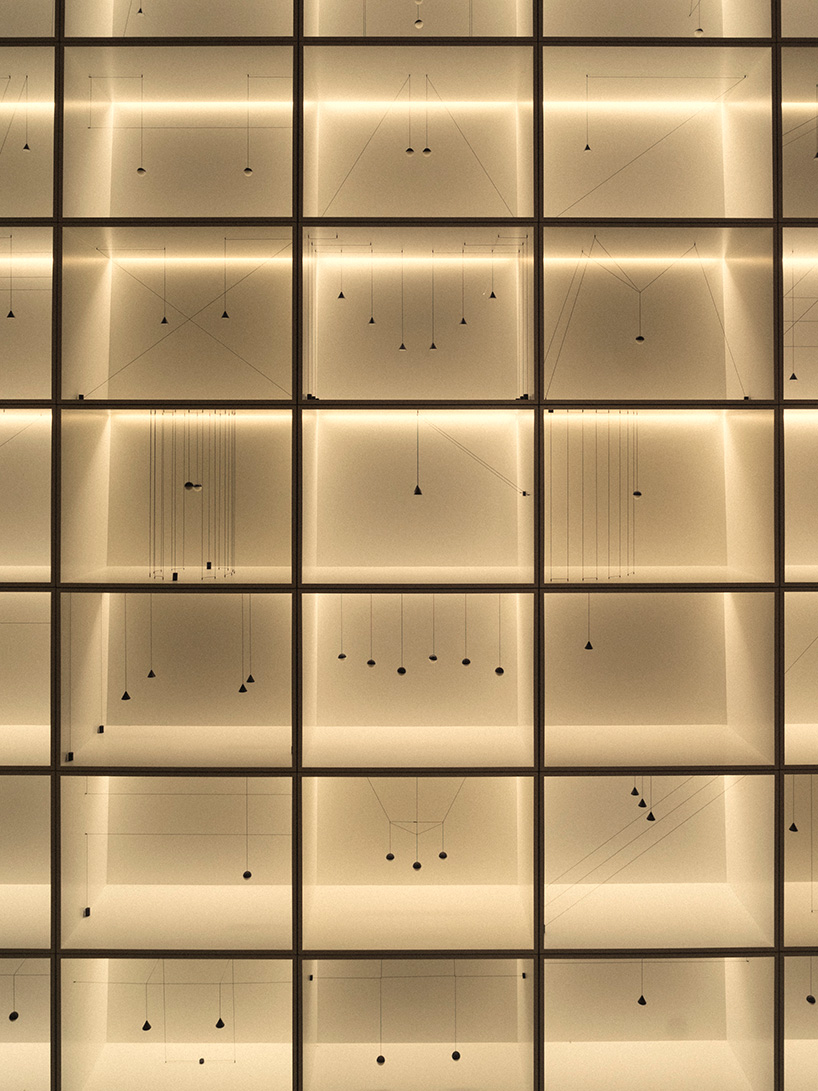
an installation of the ‘string light’ project displaying identical sized rooms in scaled models
DB: how have visitors reacted to the exhibition? what do you hope they take away from the show?
MA: well, if you’re in london, incredible artists and designers come all the time and produce work at such a scale; but people in cyprus unfortunately don’t have that opportunity so often. so, I was very happy to do an exhibition at that scale in cypress, because of that. I think the response has been really incredible, and a lot of people from abroad also managed to attend. the exhibition is going to be on until july, so I really hope that other people will enjoy the opportunity.
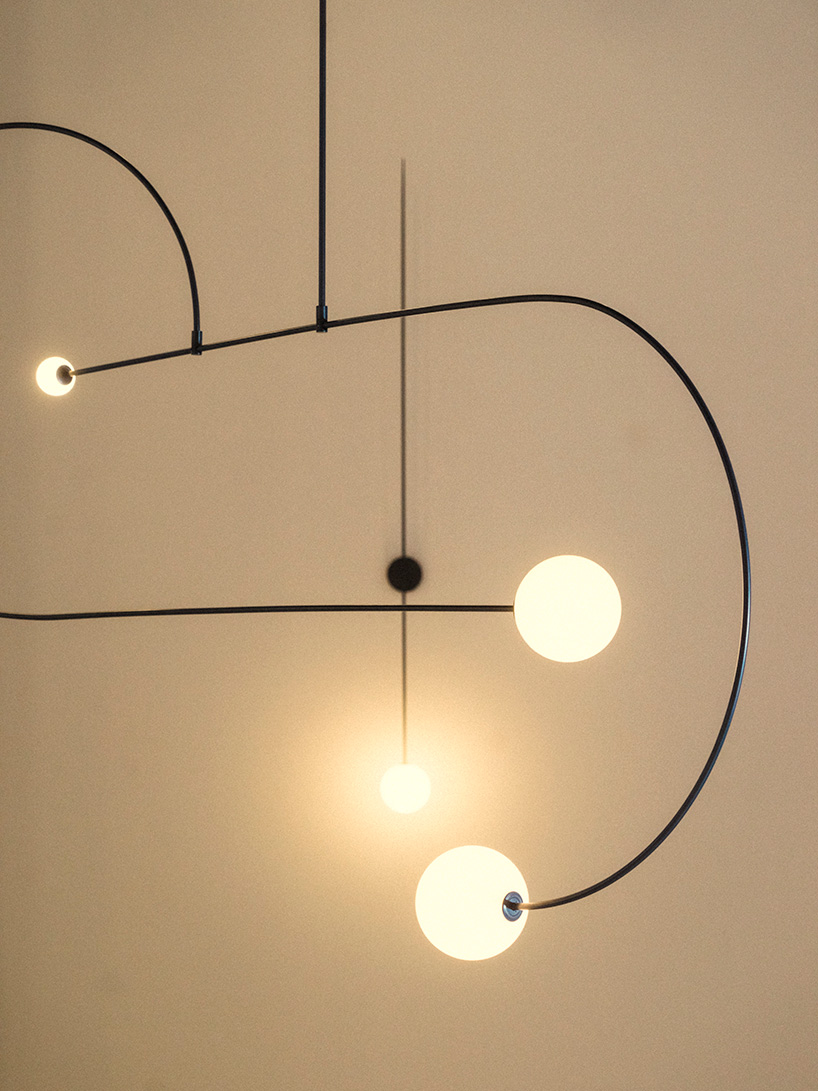
‘things that go together’ is on view from now through july 20, 2019 at NiMAC
project info:
main partner: FLOS
partner in innovation: the bank of cyprus
sponsors: with the support of E. kyriakides lighting ltd;
B&B italia; pilakoutas group; HermanMiller; puiforcat – hermès maison; fratelli fantini S.p.A.; frederick university; argo capital management ltd; petrolina; G. charalambous; coedition
donators: FLOS; B&B italia; fratelli fantini S.p.A.; alfredo salvatori srl.; cultural services of the ministry of education and culture of cyprus; HermanMiller; experimentadesign; puiforcat – hermès maison; nilufar gallery; svenskt tenn; cassina; dansk møbelkunst gallery; bang & olufsen; sigmar & carl auböck; taka ishii gallery; andreas andreades
exhibition duration: 7 march – 20 july 2019
exhibition opening hours: tuesday – saturday, 10:00–21:00
location: NiMAC | 19, palias ilektrikis, 1016 nicosia
MICHAEL ANASTASSIADES (18)
PRODUCT LIBRARY
a diverse digital database that acts as a valuable guide in gaining insight and information about a product directly from the manufacturer, and serves as a rich reference point in developing a project or scheme.
